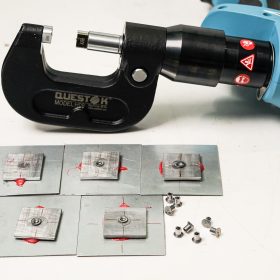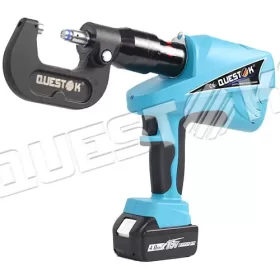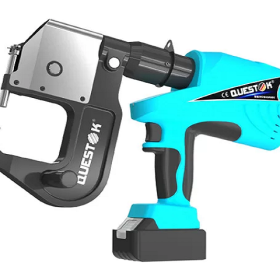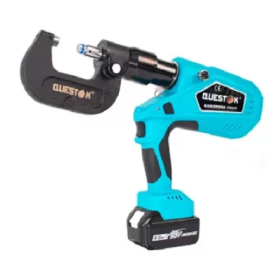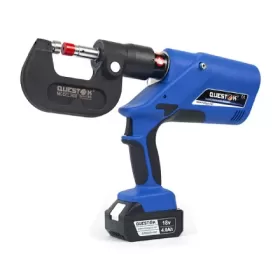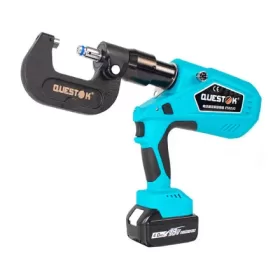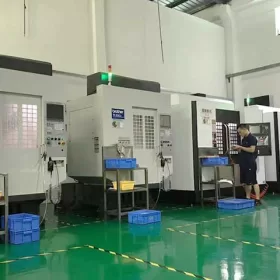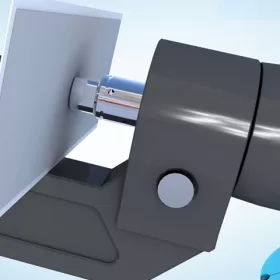The Science Behind Ford Self-Piercing Rivet Technology
The Science Behind Ford’s Self-Piercing Rivet Technology
In the automotive industry, innovative approaches to vehicle construction are constantly being sought to improve performance, durability, and efficiency. Ford’s revolutionary self-piercing rivet (SPR) technology is one such advancement that has reshaped the manufacturing process. This article delves into the scientific principles and practical applications that underpin this groundbreaking technology.
Structural Mechanics
SPR technology relies on the principles of structural mechanics to ensure the integrity and strength of automotive components. The rivets are designed to pierce through multiple layers of metal, creating a permanent joint without the need for pre-drilled holes. This process exerts immense force on the materials involved, which must be carefully calculated and controlled to avoid damaging the components.
The rivets are engineered with a conical tip that concentrates the force at the piercing point. As the rivet penetrates the metal, it expands to form a bulge on the reverse side, creating a secure mechanical interlock between the layers. The absence of pre-drilled holes eliminates the potential for stress concentrations, resulting in a stronger and more fatigue-resistant joint.
Material Science
The materials used in SPR technology play a crucial role in its effectiveness. The rivets are typically made from a lightweight aluminum alloy that combines high strength with low weight. The piercing tip is often composed of a hardened steel alloy to withstand the high forces involved in piercing the metal.
The metal sheets that are joined using SPR technology also require careful selection. Cold-rolled steel is commonly used due to its high strength and formability. The surface of the metal must be clean and free of any coatings or contaminants to ensure proper rivet adhesion.
Manufacturing Considerations
The implementation of SPR technology requires specific manufacturing considerations. The process requires a specialized hydraulic riveting machine that delivers precise force and control. The machine’s parameters, such as riveting force, dwell time, and feed rate, must be optimized for the specific materials and joint requirements.
The riveting process involves several stages. The rivets are first inserted into the riveting machine and aligned with the piercing points. The machine then applies force to the rivets, causing them to pierce the metal and form the mechanical interlock. The dwell time allows the rivet to fully expand and create a secure joint. The feed rate determines the speed at which the rivets are driven, which affects the efficiency and quality of the process.
Industry Applications
Ford’s SPR technology has found widespread adoption in the automotive industry due to its numerous advantages. It is used in a variety of vehicle components, including body panels, chassis frames, and suspension systems. SPR technology offers several benefits, including:
Improved structural strength and rigidity
Reduced weight and increased fuel efficiency
Elimination of pre-drilled holes, reducing production time and costs
Improved corrosion resistance
Enhanced safety and crash protection
Conclusion
Ford’s self-piercing rivet technology is a testament to the ingenuity and innovation that drive advancements in the automotive sector. By leveraging principles of structural mechanics, material science, and manufacturing engineering, this technology has revolutionized the way vehicles are assembled. Its widespread adoption in the industry underscores its effectiveness in enhancing vehicle performance, durability, and efficiency.
- Company News
- Industry News
- Tag
- Tags
-
The Advantages of Questok Rivet Guns: Precision, Efficiency, and Durability
In industrial fastening applications, the choice of tools directly impacts productivity, safety, and long-term cost-effectiveness. Questok rivet guns have emerged as a standout solution for professionals across aerospace, automotive, and construction sectors. Combining advanced engineering with user-centric design, these tools deliver unmatched performance. Below are the key advantages that make Questok rivet guns a preferred choice:
-
Rivet Gun FAQ
Rivet Gun FAQ-SPR
-
Fast Assembly and Repair With Cordless Solid Rivet Gun
Questok cordless solid rivet gun stands out as a pivotal innovation, merging portability with power to facilitate efficient and effective fastening in a myriad of applications.
-
Redifine The Role of Self-piercing Riveting Gun Machine
Self-piercing riveting adopts high-speed mechanical fastening skill that joins thin sheet materials, typically steel and aluminum alloys.
-
The Latest Innovations in Clinching Tool Design
Explore the latest innovations in clinching tool design, redefining precision, efficiency, and versatility in material joining.
-
The Application and Maintenance of Self-Piercing Rivet Guns
Delve into the applications of self-piercing rivet guns in the automotive and aerospace industries and reveal the essential maintenance practices that ensure their accuracy and efficiency.
-
Rivetless Riveting Gun for Ventilation Duct Projects
The ventilation duct rivetless gun is a tool for riveting ventilation ducts without rivets.
-
Guide to Using Self-Piercing SPR Riveting Gun
In the automotive industry, self-piercing SPR (Self-Piercing Rivet) riveting guns are commonly used for joining metal components in vehicle bodies, including BMW vehicles.
-
Rivet Gun FAQ
Rivet Gun FAQ-SPR
-
Versatile Fastening- Applications of the Handheld Rivet Gun Across Industries
In the realm of fastening, the handheld rivet gun stands as a testament to ingenuity and versatility. Its ability to effortlessly join materials with sheer strength and permanence has revolutionized manufacturing and construction processes, leaving an enduring mark on diverse industries. Aerospace: Where precision and reliability are paramount, the rivet gun shines. In aircraft assembly, […]
-
Time-Saving Tools- Speeding Up Projects with Electric Blind Rivet Guns
In the whirlwind of project deadlines, every minute counts. But what if there was a tool that could dramatically reduce assembly time, giving you an edge in the race against the clock? Enter the electric blind rivet gun: your secret weapon for lightning-fast and effortless riveting. Electric blind rivet guns are the ultimate time-savers for […]
-
Streamlining Fastening- How an Electric Blind Rivet Gun Enhances Efficiency
Introduction In the realm of manufacturing and assembly, fastening plays a crucial role in securing components and ensuring structural integrity. Traditional manual rivet guns, while reliable, are often time-consuming and labor-intensive. The advent of electric blind rivet guns has revolutionized the fastening process, significantly enhancing efficiency and productivity. This article delves into the benefits of […]
-
The Role of Automation in Electric Rivetless Clinching
Electric rivetless clinching (ERC) is a lightweight joining process that eliminates the need for rivets or other fasteners. This can lead to significant cost savings and increased production efficiency. Automation plays a critical role in ERC, enabling high-speed and high-volume production. Automated Feed Systems Automated feed systems are used to accurately position the two workpieces […]
-
Why Choose a Universal Self-Piercing Riveting Gun for Your Projects?
In the realm of construction and fabrication, riveting guns stand as indispensable tools for creating secure and robust connections. Among the various types available, universal self-piercing riveting (SPR) guns have emerged as a game-changer due to their versatility and efficiency. This article will delve into the compelling reasons why choosing a universal self-piercing riveting gun […]
-
Why Choose Stainless Steel Hollow Rivets for Your Projects?
In the world of industrial manufacturing, choosing the right fasteners for your projects is crucial for ensuring longevity and reliability. Among the many options available, stainless steel hollow rivets stand out as a superior choice for a wide range of applications. This article delves into the compelling reasons why stainless steel hollow rivets are the […]
-
Top Trends in Electric Rivetless Clinching Guns
In the realm of fastening technology, electric rivetless clinching guns have emerged as a revolutionary solution for a wide range of industrial applications. These advanced tools offer several преимущества and capabilities, revolutionizing the way businesses approach their fastening needs. Adoption of Brushless Motors Brushless motors have gained significant traction in electric rivetless clinching guns due […]
